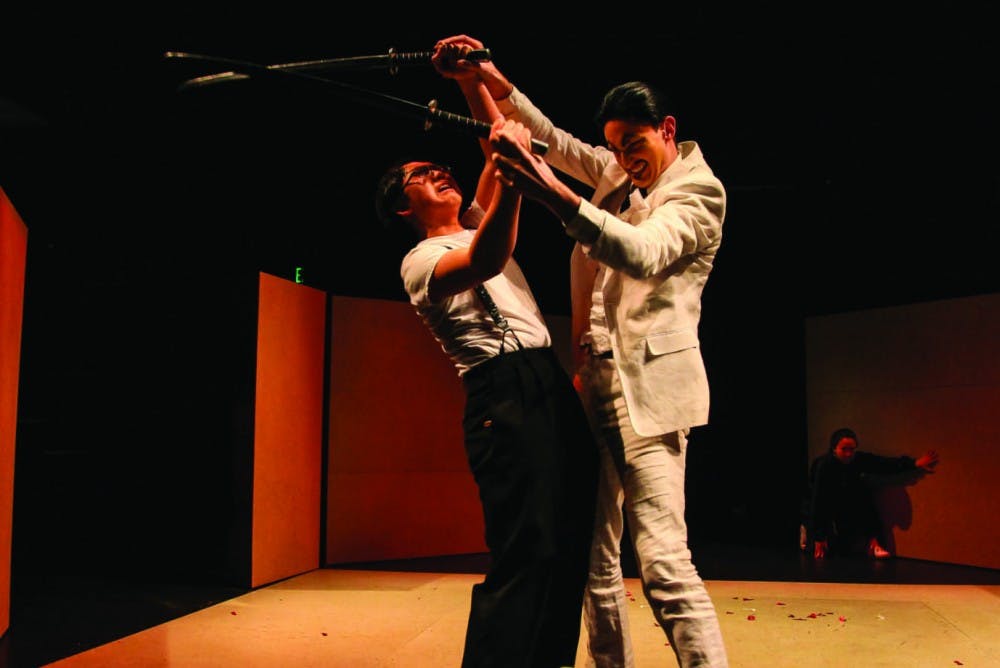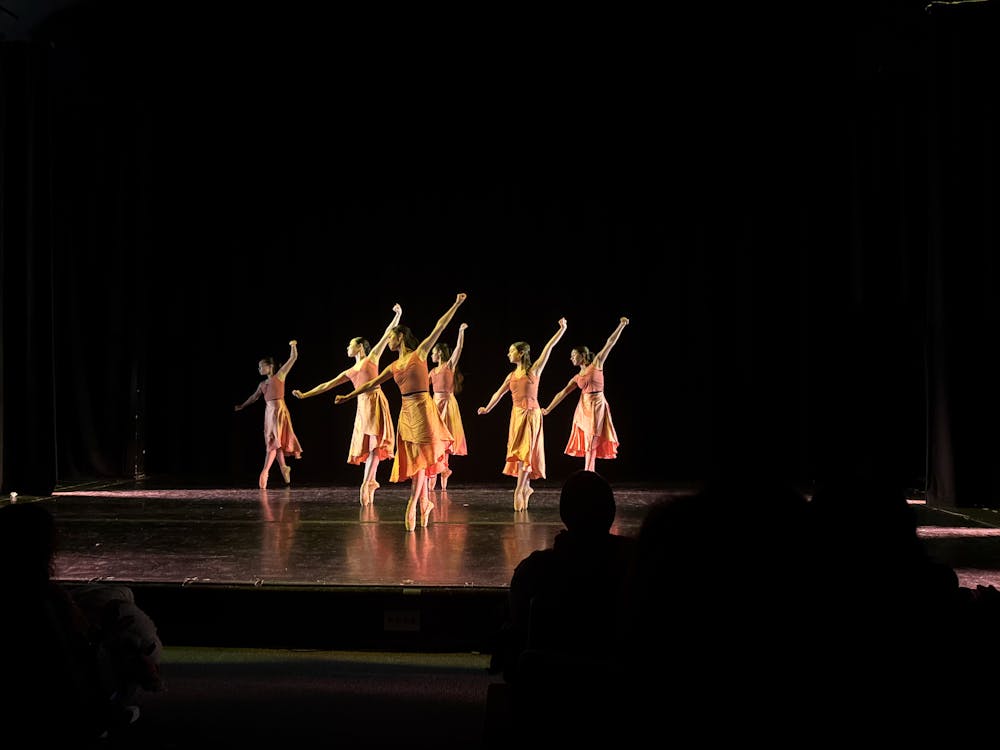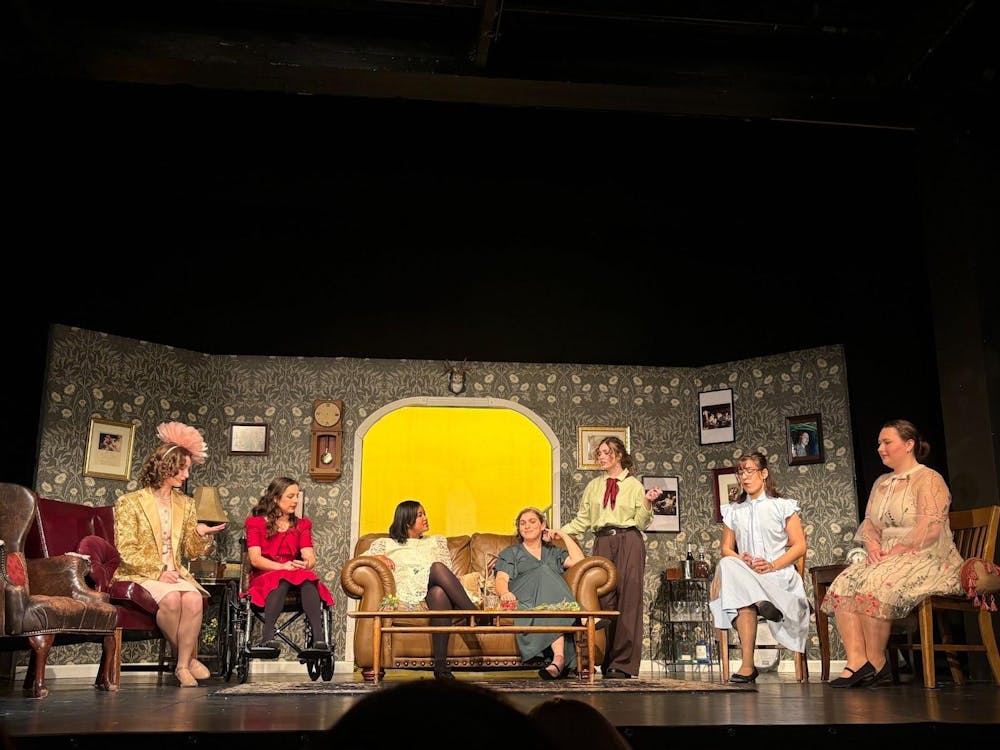A play within a play. A murder mystery within a romance within a family drama within a coming-of-age story, all within a socio-political satire about Asian-Americans, created by Asian-Americans. “Charles Francis Chan Jr.’s Oriental Murder Mystery” — a mouthful of a title, yet fittingly convoluted just like its subject matter — is the very first play in Princeton’s theater department to feature a cast of entirely Asian-American actors.
So what is the Asian-American experience? For our protagonist Frank Chan, dropping out of college and losing his girlfriend constitute great personal predicaments, not to mention his desperate hopes to avoid the imminent draft and the almost ridiculous, yet painfully realistic portent of him having to fight in Vietnam against “Orientals” whom whites perceive as similar to him. As a resort, Frank decides to change such perception: He invents the term “Asian-Americans” to substitute for “Orientals,” for a people whose existence has been marginalized and devalued for a long time in a country where they are born and raised, but where they fail to entirely belong.

Frank’s heartfelt speech about his grand vision culminates with a passionate cry: “I’m going to write a play!” His audience freezes, both on and off stage. Yet this seeming anticlimax serves for more than a comical relief after heavy talks of politics, as it affirms the audience’s expectations about what Asian-Americans can and should do, thereby purposefully and subtly making us uncomfortable, if not slightly ashamed, for holding these expectations given the fact that we are watching a play-within-a-play written and acted by Asian-Americans.
Ironic, right? The play is full of moments like this when we frown at the blatantly racist stereotypes uttered shamelessly on stage, only to realize that part of us agree with, or at least understand, the mentality behind these stereotypes to some extent. When Frank is criticized for living a “non-participatory life” where everyone else “listens to [him] bitch about white people all day,” there comes laughter from the audience, followed by seconds of pensive, almost guilty silence. Perhaps the play aims to inspire in us simultaneous sentiments of recognition and defiance, like when you and your friends smile knowingly at the common knowledge of a dirty secret, only to bury it or burn it, which corresponds more accurately with the dramatic ending of the play, fraught with Kung Fu and sword fights. And it succeeds.

But is the final patricide necessary? Granted, what Frank intended to kill was not his father but the deeply rooted “Orientals” traditions (i.e. of putting up with white supremacy with a smile and living “non-participatory lives”) associated with his father, but by suggesting the necessity to uproot this heritage, the play underlines the significance of this heritage itself, and undermines the role of individual choice to some extent. A question frequently discussed in this play is “what do you want your child to be like?”, instead of “what do you want to be like?” or “what does your child want to be like?” The characters’ concern regarding their collective racial identity has become so overwhelming that it overshadows their identities as individuals. The Asian-American future, which they actively claim ownership of, might blind them from understanding the perspectives of those like that of Frank’s father.
When Frank’s ex-girlfriend announces that she will leave him for an acting job in a “Hollywood major motion picture,” her ecstasy about her role as a prostitute with one line is hilarious yet heartbreaking at the same time. As absurd as this situation seems on stage, I personally know girls who would have made the same choice in similar circumstances. However, I caught myself thinking exclusively of Asian-American girls, since such is the context grounded by this play, while overlooking girls from other racial, cultural, or ethnic backgrounds who might have done the same. While the “assortment of race jokes and diatribes” (as the female protagonist Kathy jokes, another sign of the extraordinary self-awareness of this play) achieves powerful satirical effects, it simultaneously imposes a pair of race-tinted glasses upon its audience that might have limited their potential reflections on the play outside of the Asian-American context.


What helped to loosen such restraints was that almost all actors play more than one role, exemplifying the fluidity of racial and interpersonal lines. This creative and thought-provoking approach established a crucial middle ground between the construction and the collapse of identity depicted in the play, and offers an open-ended conclusion to the motif of “seeing” throughout the show: The focus of the recurring question “do you see me now?” is really on the “now,” and it is to be created by every one of us, both individually and collectively.









